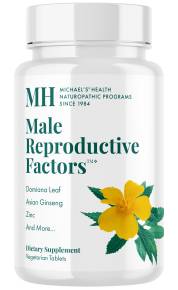Nervous System Health & How to Combat Nerve Pain

Like an intricate telecommunication system, our body is wired from the top of our head to the tips of our toes with an incredible network of nerves. Nerves carry signals that tell our muscles to lift, our eyes to blink, and even when it is time to pull off the highway to use the restroom. The body hums along, coordinating our movements and reactions, when suddenly something happens that causes damage and our nerves let us know that pronto with a loud signal called pain.
Virtually everyone experiences pain. Pain is a survival characteristic. Just as the firetruck siren is unpleasant and its noise invasive, pain alerts us to a dangerous situation. Pain is so unpleasant that it spurs us to take action. We don’t even have to think to withdraw our hand from the hotplate—our nerves do it for us in milliseconds.
If we did not have pain, we would not survive long. Our broken bones might go untended, our diseases undiagnosed, our skin injuries untreated. Therefore, we should grudgingly admit that pain is our friend, at least sometimes.
So, our nerves carry pain signals when we are ill or injured. But what happens when the nerve itself is inflamed, impinged, ill, or injured? That is a different flavor of pain entirely. Also, when the nerves are sick, they do not work correctly and often send severe pain signals when in fact there is not any serious physical distress. In fact, even if you have an amputated limb, your nerves may give you the sensation that you “feel” pain in the missing limb. They call this phantom pain, but it is very real.
There are lots of problems that have nerve health at the core, including sciatica, trigeminal neuralgia, and peripheral neuropathy, “peripheral” in this case meaning hands and feet.
Nerve damage can also be the result of an accidental injury or a chemotherapy side effect. Shingles is a combination of viral reactivation with nerve tract involvement.
Influence of Blood Sugar on Nerve Health
Probably the most common chronic nerve problem is peripheral neuropathy. It is often associated with diabetes, because the abnormal blood sugars are very damaging to the nerves. If not well managed, the majority of people with diabetes will develop nerve problems, especially peripheral neuropathies, over time. These are called diabetic neuropathies.
If your problems are related to abnormal blood sugars, the first step is toward healthy blood sugar. My favorite herbal protocol for Type 2 diabetes is a clinically studied herb called Hintonia latiflora, proven to reduce blood sugar levels, along with quality berberine and curcumin products. For more information on blood sugar balance, please see my blog on this website entitled “How to Balance Blood Sugar for a Longer and Better Life.”
Nerve Inflammation and Healing
Nerves are notoriously difficult to heal and repair. In most cases, you have to first reduce inflammation. Inflammation causes swelling, pressure, and improper nerve conduction. Inflammation of surrounding tissue causes impingement disorders. The two best herbal nerve inflammation mediators are curcumin and boswellia.
Scientific studies on curcumin have demonstrated its ability to protect nerves from damage in the first place, reduce inflammation in the nerve, and stimulate nerve regeneration. In an animal study of spinal cord damage, curcumin was found to facilitate nerve growth via its activity on inflammation and neurotrophic factors.
Since curcumin is difficult to absorb, it is more therapeutic to use enhanced absorption curcumin. There are a few methods used to boost absorption. The most clinically studied enhanced curcumin utilizes turmeric essential oil in a patented process called BCM-95.
Boswellia is not the inflammation powerhouse that is curcumin, but the type of inflammation it influences is hard to treat. Boswellia’s great strength is its ability to reduce 5-lipoxegenase (5-LOX) inflammation. There is no over-the-counter drug—no ibuprofen, acetaminophen, aspirin, or naproxen sodium—that touches 5-LOX inflammation.
Studies have shown that 5-LOX is a key enzyme in the creation of leukotrienes, and this has been implicated in inflammatory central nerve system disorders. Boswellia’s ability to downregulate 5-LOX inflammation is crucial to treatment and recovery.
One especially powerful compound in boswellia is called acetyl keto-11 beta boswellic acid, or AKBA. Unstandardized boswellia can have as little as 1% AKBA. For better effectiveness, a standardization of at least 10% AKBA is best.
B Vitamins Needed for Nerve Health
The family of B vitamins is intimately involved in many crucial processes by which nerves function. Suboptimal levels of B vitamins can be problematic with regards to nerve health.
One crucial B-vitamin is B1 (thiamine). Vitamin B1 comes in two forms, water and fat soluble. The fat-soluble variety is called benfotiamine, and it can achieve 5 times greater concentration in the body than the water-soluble form. This is especially good for nerve protection and repair. Benfotiamine helps to protect the nerve cells from the toxicity created by excessive blood sugar levels. It has also been proven in human clinical studies to reduce both pain and complications of diabetic neuropathy.
The active form of vitamin B12, methylcobalamin, is another excellent intervention for nerve disorders. Vitamin B12 supports the nerve itself and nerve activity that sends signals throughout the body. These are some of the very structures that are threatened by inflammation and damage from toxic exposure. A great many people have suboptimal levels of B12, meaning not outright deficient, but not in the healthiest range, either. And according to the journal, Annual Review of Nutrition, up to 15 percent of individuals over 60 are actually B12 deficient.
Other B vitamins are important also, and they work especially well when used together. In a published human clinical study, the combination of vitamin B1, B2 (riboflavin), B6, B12 and folic acid significantly reduced diabetic neuropathy symptoms. The length of the study was four months.
There are other vitamins and minerals that are useful with nerve issues, including chelated magnesium, pantothenic acid, biotin, zinc, and chromium.
Alpha Lipoic Acid Is My Hero
I have my own success story with alpha lipoic acid (ALA). In a dental procedure gone awry, a nerve in my mouth was severely damaged. Not only was it excruciating in the moment, it left me with a tongue that was numb on one side, just as if I’d had a shot of Novocain. I could not taste nor detect heat and cold on one side, and it interfered with my ability to clearly pronounce words. This was problematic as I give many (many) educational lectures across the country, and also via webinars and radio interviews. I was very alarmed. “Panic” might be a better word.
I met with a specialist who told me there are five nerve microsurgery centers in the US that did a surgical procedure to repair my injured nerve, but that came with a risk for more even nerve damage. He suggested I wait to see how much healing would occur, and if my nerve function came back at least 75%, it would be better to be content with that rather than risk the surgery. I was to come back in 90 days.
Fingers crossed, I set about to heal myself as quickly as possible. I took all the supplements I have thus far mentioned, but the centerpiece to my regimen was alpha lipoic acid. I took 600 to 1,200 mg a day, every day for three months.
I looked at the published human clinical trials on ALA, and saw its effectiveness for diabetic neuropathy, chronic neck pain with nerve involvement, and carpal tunnel. I saw animal studies on nerve healing. Unfortunately, I saw nothing on nerve damage in the mouth, but decided—a nerve is a nerve, right? If it works in the neck and wrist and feet, why not my tongue?
At the end of three months I returned to the specialist and he was astounded—he told me he thought, given the damage to the nerve, that at this appointment, he was going to have to refer me to an out-of-state specialty surgical center. Instead, I had recovered 90% of my nerve function!
Alpha lipoic acid can be expensive and it is hard to work with in formulas because it sticks to manufacturing equipment. This results in many formulas skimping on their ALA content with low doses, sometimes as little as 20 mg. Remember that the minimum effective dose shown in human trials is 600 mg, with some studies dosing even higher.
Patience Pays Off
It is easy to become discouraged when dealing with nerve problems because nerves are slow to settle down and heal. Don’t be discouraged. People can continue to recover from nerve damage for months, even years. The way you feel now will not last forever. Products can be a powerful part of your healing and repair protocol, but give them at least three to four months to evaluate their effectiveness for you. Patience really pays off when you are working with nerve problems.
“11-Keto-β-boswellic acid attenuates glutamate release and kainic acid-induced excitotoxicity in the rat hippocampus” by C.W. Lu et al., Planta Medica, 2020
“Acetyl-11-keto-β-boswellic acid extracted from Boswellia serrata promotes Schwann cell proliferation and sciatic nerve function recovery” by X.W. Jiang et al., Neural Regeneration Research, 2018
“α-Lipoic acid and superoxide dismutase in the management of chronic neck pain: a prospective randomized study” by M.G. Letizia et al., Drugs in R&D, 2014
“B vitamins and berries and age-related neurodegenerative disorders” by E. Balk et al., Evidence Report Technology Assessment, 2006
“Curcumin alleviates oxaliplatin-induced peripheral neuropathic pain through inhibiting oxidative stress-mediated activation of NF-κB and mitigating inflammation” by X. Zhang et al., Biological and Pharmaceutical Bulletin, 2020
“Efficacy of α-lipoic acid in diabetic neuropathy” by N. Papanas and D. Ziegler, Expert Opinion of Pharmacotherapy, 2014
“High doses of biotin in chronic progressive multiple sclerosis: a pilot study” by F. Sedel et al., Multiple Sclerosis and Related Disorders, 2015
“Transplantation of activated olfactory ensheathing cells by curcumin strengthens regeneration and recovery of function after spinal cord injury in rats” by J. Guo et al., Cytotherapy, 2020
“Treatment of carpal tunnel syndrome with alpha-lipoic acid” by G. Di Geronimo et al., European Review for Medical and Pharmacological Sciences, 2009
“Vitamin B12 deficiency and diabetic neuropathy in patients taking metformin: a cross-sectional study” by M. Alvarez et al., Endocrine Connections, 2019
Cheryl Myers
Cheryl Myers, RN, is an integrative health nurse, author, and expert on natural medicine. She is a nationally recognized speaker who has been interviewed by the New York Times, Wall Street Journal and Prevention magazine. Her articles have been published in Aesthetic Surgery Journal and Nutrition in Complementary Care, and her research on botanicals has been presented at the American College of Obstetrics and Gynecology and the North American Menopause Society. Follow Cheryl on Facebook!
Don't Miss a Thing!
Get the latest articles, recipes, and more, when you sign up for the tasteforlife.com newsletter.

